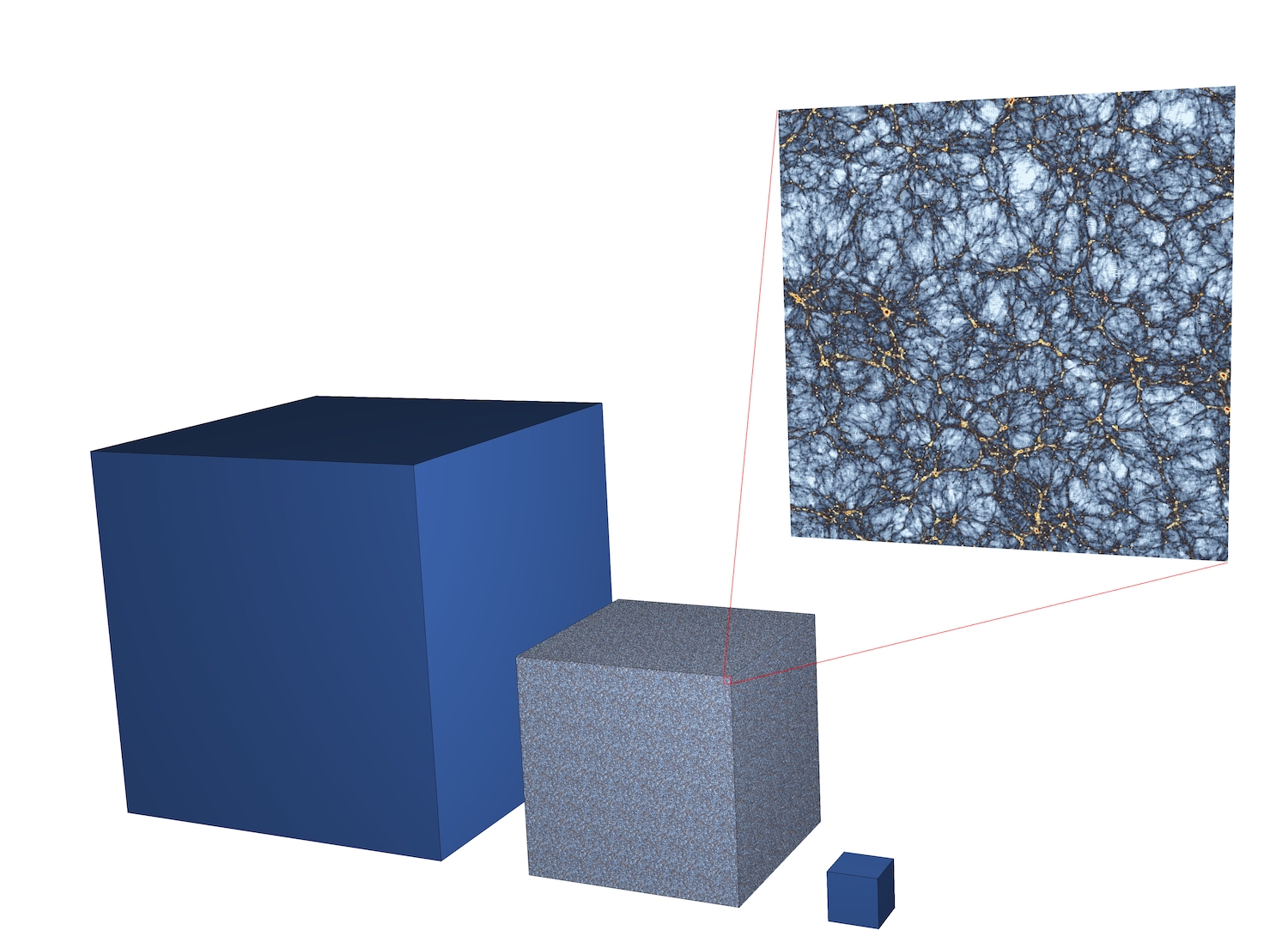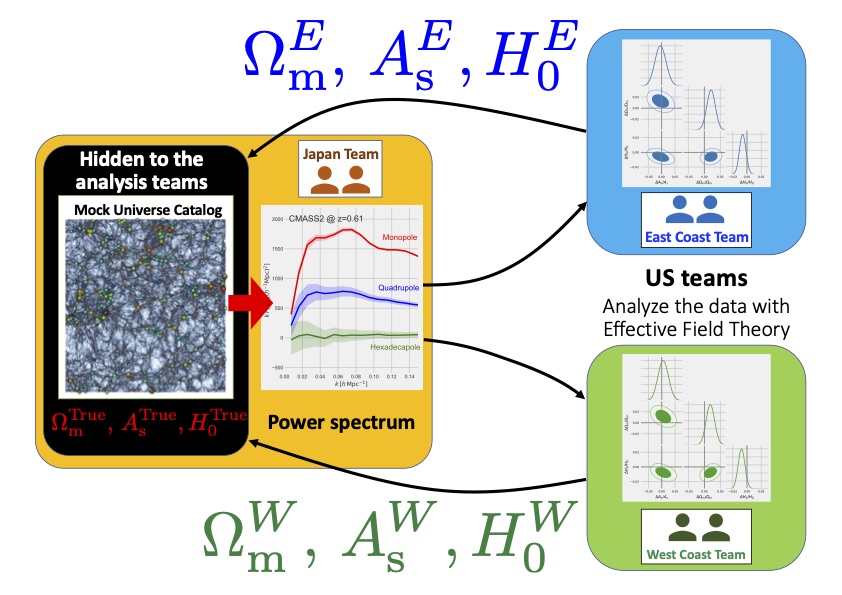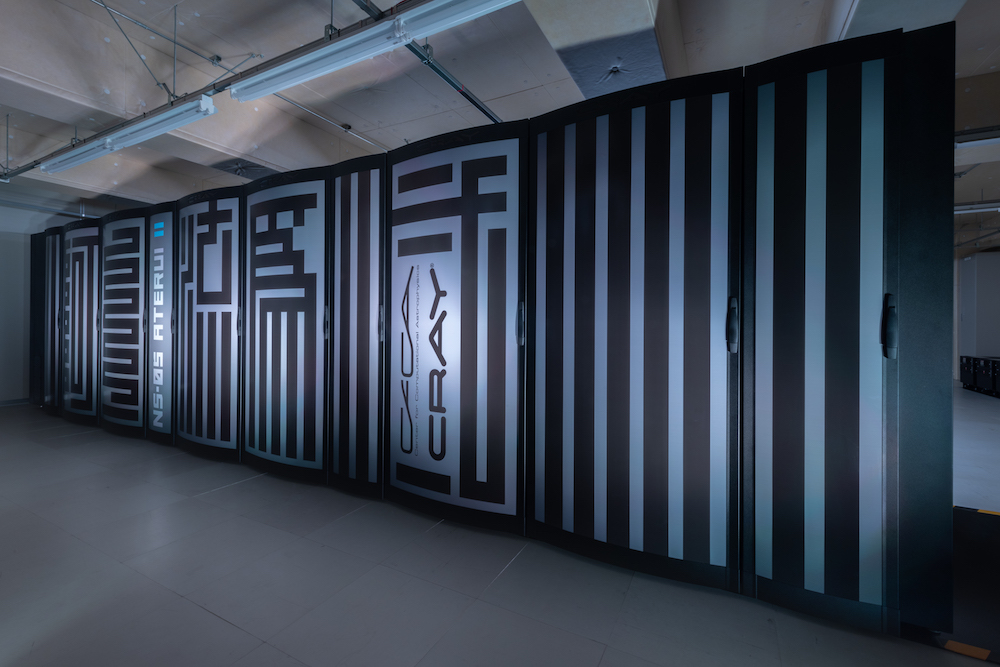Astronomers have played a game of guess-the-numbers with cosmological implications. Working from a mock catalog of galaxies prepared by a Japanese team, two American teams correctly guessed the cosmological parameters used to generate the catalog to within 1% accuracy. This gives us confidence that their methods will be able to determine the correct parameters of the real Universe when applied to observational data.

The basic equations governing the evolution of the Universe can be derived from theoretical calculations, but some of the numbers in those equations, the cosmological parameters, can only be derived through observations. Cosmological parameters tied to the unobservable parts of the Universe, like the amount of dark matter or the expansion of the Universe driven by dark energy, must be inferred by looking at their effects on the distribution of visible galaxies. There is always uncertainty when working with the dark part of the Universe, and it is hard to be sure that the models and data analysis are accurate.
To test the data analysis, a Japanese team led by Takahiro Nishimichi at Kyoto University and the Kavli IPMU* of the University of Tokyo used the ATERUI II supercomputer at the National Astronomical Observatory of Japan to create 10 mock universes with a total volume 100 times greater than even the most extensive galaxy surveys so far. The large volume, large dynamical range, and high resolution achievable only with the world’s most powerful supercomputer dedicated to astronomy were needed to separate systematic errors in the analysis models from random errors due to meaningless coincidences in the data. The cosmological parameters used to evolve these mock universes were chosen randomly from the range of reasonably expected values. The Japanese team prepared a catalog listing the positions of the galaxies in the simulation similar to the catalogs produced by real telescopes observing the heavens. The Japanese team then challenged other astronomers to guess the numbers used to generate the catalog.
Two American teams accepted the challenge. Working independently and using different methods, both teams analyzed the Japanese data with tools used for real astronomy surveys. Each team had only one chance to guess the numbers, and both teams produced answers within 1% of the real values. This shows that these methods should give correct results when applied to real observational data.

So what were the correct numbers? They’re still secret so that more teams can play guess-the-numbers. In this way the challenge data will continue to support the development and testing of cosmic analysis techniques.
These results appeared as Takahiro Nishimichi et al. “Blinded challenge for precision cosmology with large-scale structure: Results from effective field theory for the redshift-space galaxy power spectrum” in Physical Review D on December 28, 2020.
(March 19, 2021)
* Kavli IPMU: Kavli Institute for the Physics and Mathematics of the Universe
Research Paper
Title: Blinded challenge for precision cosmology with large-scale structure: Results from effective field theory for the redshift-space galaxy power spectrum
Journal: Physical Review D
Authors: Takahiro Nishimichi, Guido D’Amico, Mikhail M. Ivanov, Leonardo Senatore, Marko Simonović, Masahiro Takada, Matias Zaldarriaga, and Pierre Zhang
DOI: 10.1103/PhysRevD.102.123541
Supercomputer Used in This Research
 This research utilized the NAOJ supercomputer ATERUI II (Cray XC50) for the many-body simulation of large-scale structures of the Universe. ATERUI II is operated at NAOJ Mizusawa Campus (Oshu, Iwate) with a theoretical peak performance of 3.087 Pflops. (Image Credit: NAOJ)
This research utilized the NAOJ supercomputer ATERUI II (Cray XC50) for the many-body simulation of large-scale structures of the Universe. ATERUI II is operated at NAOJ Mizusawa Campus (Oshu, Iwate) with a theoretical peak performance of 3.087 Pflops. (Image Credit: NAOJ)
For the Use of Contents in This Website
- Contents are to be used with a clear indication of its copyright (e.g. (c) NAOJ.)
- If you would like to use the contents found in this web site, please follow Terms of Use of the Website of NAOJ.
Related Links
- Multipole moment data for PT challenges (created by the Japan team)
- NAOJ Press Release: American Astronomers Find Secrets of Japanese Universes
- Kavli IPMU Press Release: American Astronomers Find Secrets of Japanese Universes
